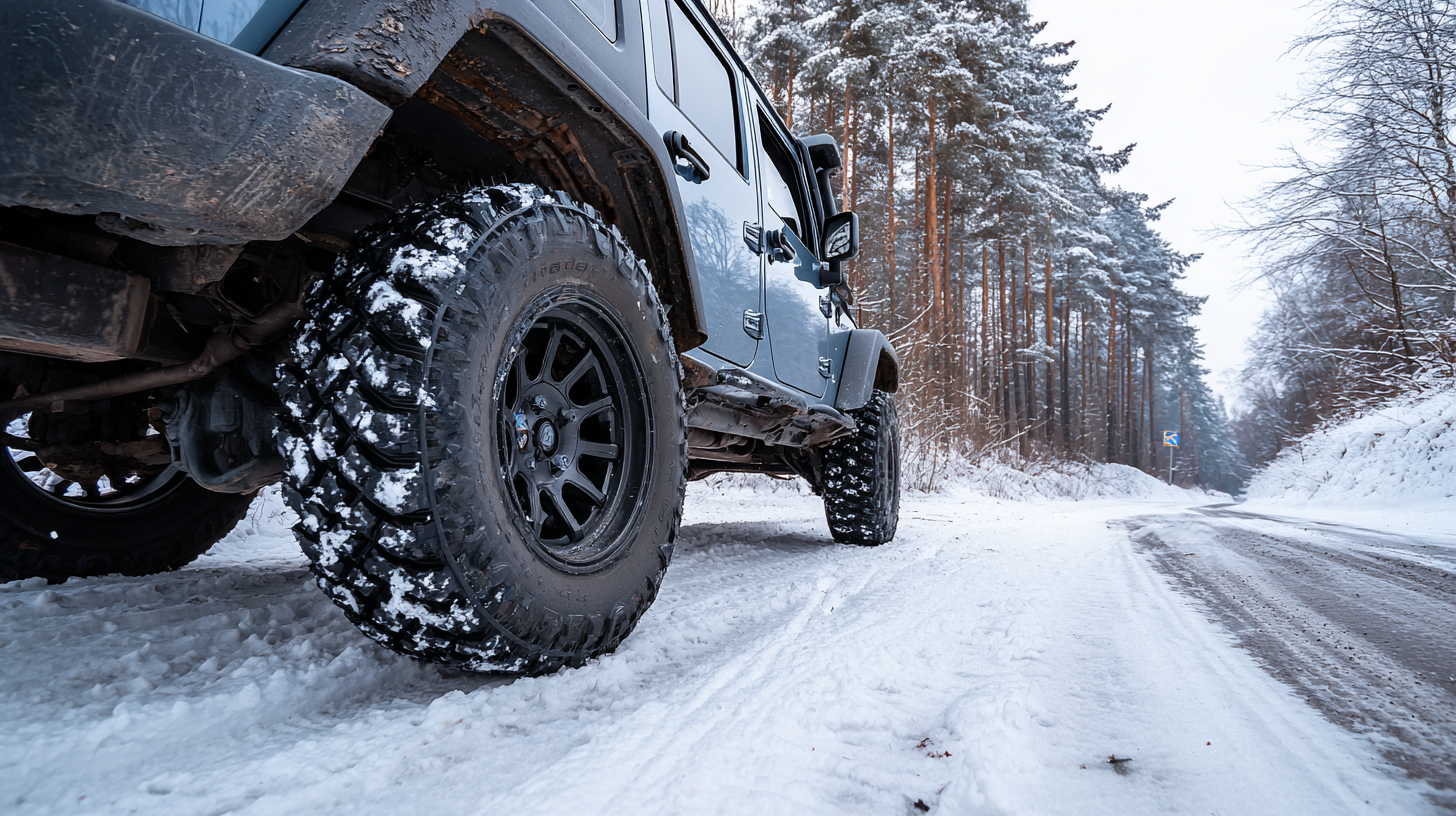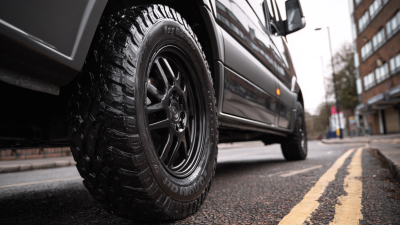14 Toro Road Toronto, Ontario
Mastering Winter Adventures: The Ultimate Guide to Off Road Snow Tires for Adventurous Drivers
In the realm of winter driving, mastering off-road adventures necessitates not only skilled driving but also the right equipment. Off road snow tires are essential for adventurers looking to traverse challenging, snow-laden terrains. According to a recent report by the Tire Industry Association, nearly 40% of winter accidents are attributed to inadequate tire performance in snowy conditions, highlighting the critical role of specialized tires.

Moreover, a study by Consumer Reports shows that vehicles equipped with off road snow tires can improve traction by up to 50% compared to standard all-season tires. This guide aims to delve into the intricacies of off road snow tires, providing invaluable insights for drivers eager to enhance their winter safety and exploration capabilities.
Whether navigating steep inclines or navigating hefty snow drifts, understanding the importance of off road snow tires will empower drivers to conquer winter's challenges with confidence.
Ultimate Off-Road Snow Tire Selection: Key Specifications to Consider for Adventure Seekers
 When selecting off-road snow tires, adventure seekers must consider several key specifications that can significantly enhance their driving experience in winter conditions. One of the primary factors is tread design; aggressive patterns with deep grooves and wide lugs provide superior traction on snow and ice-covered terrains. Tires designed specifically for off-road use often feature self-cleaning capabilities, which help prevent snow buildup and maintain grip during challenging excursions.
When selecting off-road snow tires, adventure seekers must consider several key specifications that can significantly enhance their driving experience in winter conditions. One of the primary factors is tread design; aggressive patterns with deep grooves and wide lugs provide superior traction on snow and ice-covered terrains. Tires designed specifically for off-road use often feature self-cleaning capabilities, which help prevent snow buildup and maintain grip during challenging excursions.
Another essential specification is the tire’s rubber composition. Winter tires are engineered with softer compounds that remain flexible in cold temperatures, allowing for better contact with the surface. Additionally, evaluating the tire's aspect ratio can help determine stability and handling; a lower ratio can offer improved control during high-speed maneuvers on snowy trails. By paying attention to these specifications and ensuring they align with their driving style and terrain, adventurous drivers can confidently tackle winter landscapes and fully embrace their off-road journeys.
Understanding Tread Patterns: How Design Impacts Traction and Safety in Snowy Conditions
When navigating snowy terrains, the design of off-road tires plays a pivotal role in ensuring both traction and safety. The tread pattern is not merely for aesthetics; it is specifically engineered to enhance grip on icy surfaces. Tires with deeper and wider grooves provide better channeling of snow and slush, reducing the risk of hydroplaning. Meanwhile, tire designs with biting edges, often seen in winter-specific treads, enable drivers to maintain a firm hold on slippery roads, translating to improved handling and stability.
Another crucial aspect is the tire's rubber composition, which remains flexible in cold temperatures, ensuring optimal contact with the road. This adaptability enhances the effectiveness of the tread pattern, allowing for maximum traction when it is most needed. Additionally, asymmetrical and directional tread patterns contribute to better performance in various snow conditions, enabling drivers to tackle everything from packed snow to loose powder. By understanding how these design elements interact with winter driving environments, adventurous drivers can make informed decisions and select the right tires, significantly enhancing their winter journey experience.

Evaluating Snow Tire Performance: Key Metrics on Grip and Durability in Winter Terrain
When evaluating snow tire performance, two crucial metrics stand out: grip and durability. Grip refers to the tire's ability to maintain traction on icy and snowy surfaces, and the durability measures how well the tire withstands the harsh conditions of winter driving. According to the Tire Rack’s 2022 Winter Tire Test, high-quality snow tires can improve traction by up to 50% compared to all-season tires, significantly enhancing handling and stopping distance in adverse conditions.
For adventurous drivers, selecting snow tires with advanced tread design is essential. Tires featuring deeper grooves and multiple biting edges provide better grip in deep snow and slush. The same report indicates that brands with a dedicated winter rubber compound showed a remarkable 20% improvement in wear resistance, making them a more reliable long-term investment.
**Tips:** Always check the tire tread depth; tires with a depth of at least 6/32 inches are recommended for effective winter performance. Additionally, consider rotating your tires regularly to ensure even wear, which can extend their lifespan and maintain optimal grip throughout the season. Investing in the right snow tires not only enhances safety but also elevates the overall driving experience in winter terrain.
Snow Tire Performance Comparison: Grip and Durability
Top 5 Recommended Off-Road Snow Tires: Performance Ratings and User Reviews to Guide Your Choice
When it comes to tackling winter's challenges, having the right off-road snow tires can make all the difference. In the realm of performance, several top contenders stand out due to their exceptional traction, durability, and user satisfaction. The first on our list is the **BFGoodrich All-Terrain T/A KO2**, renowned for its impressive ability to grip icy surfaces while providing comfort on rough terrains. Users consistently praise its longevity and resistance to cuts, making it a reliable choice for extensive winter excursions.
Another strong contender is the **Nokian Hakkapeliitta LT2**. This tire is specifically designed for extreme winter conditions, combining advanced rubber technology and a unique tread pattern to offer superior handling and stability. Feedback from users highlights its amazing performance in deep snow and slush, ensuring that adventurous drivers can explore remote landscapes without hesitation. Rounding out the top five is the **Cooper Discoverer STT Pro**, a tire favored for its rugged capability and versatility. Drivers commend its noise reduction on highways while still delivering impressive snow traction during off-road escapades. With these highly-rated options, choosing the best snow tires for your winter adventures becomes a more informed and confident decision.
Maintenance Tips for Off-Road Snow Tires: Ensuring Optimal Performance and Longevity During Winter Adventures
When it comes to off-road winter adventures, maintaining your snow tires is crucial for ensuring optimal performance and safety. Research from the Tire Industry Association indicates that properly maintained tires can enhance traction by up to 30%, which is particularly important in challenging winter conditions. To achieve this, regular tire pressure checks are essential, as cold weather can lower air pressure, potentially leading to reduced grip and a higher likelihood of tire damage.
Additionally, rotating and balancing your tires every 5,000 to 8,000 miles not only extends their lifespan but also optimizes vehicle handling. According to a report by Consumer Reports, regularly rotated tires can last approximately 20% longer than those that are not. While cleaning the tires to remove sand, mud, and snow buildup is vital after each adventurous outing, it's equally important to inspect the tread depth. Those with less than 6/32 inches of tread may not perform adequately in deep snow, increasing the risk of accidents. By adhering to these maintenance tips, drivers can ensure that their off-road snow tires maintain peak performance and longevity throughout the winter months.
Mastering Winter Adventures: The Ultimate Guide to Off Road Snow Tires for Adventurous Drivers - Maintenance Tips for Off-Road Snow Tires: Ensuring Optimal Performance and Longevity During Winter Adventures
| Aspect | Details |
|---|---|
| Tire Type | Studded vs. Studless |
| Tread Pattern | Non-directional and directional designs for traction |
| Tire Pressure | Maintain recommended PSI to ensure grip and reduce wear |
| Visual Checks | Inspect for wear, cuts, and foreign objects |
| Storage Tips | Store in a cool, dry place away from sunlight |
| Alignment Check | Ensure proper alignment to prevent uneven wear |
| Retread Options | Consider retreading for prolonged lifespan |
| Seasonal Change | Regularly switch to summer tires to optimize performance |
Related Posts
-

Unlocking Adventure: The Ultimate Guide to Choosing Off Road Tires for Any Terrain
-

Exploring the Impact of Van Tyres on Trade Dynamics at the 138th China Import and Export Fair 2025
-

Ultimate Guide to Choosing Off Road Snow Tires for Your Winter Adventures
-

Vehicle Tyres Market Trends at 2025 China Import and Export Fair Insights and Opportunities
-

The Ultimate Guide to Choosing the Right Van Tyres for Any Road Condition
-

The Ultimate Guide to Choosing the Right Tyre Shop for Your Vehicle Needs

